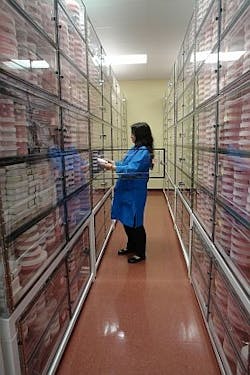Army starts testing Lockheed Martin HULC computer-controlled robotic exoskeleton for infantry soldiers
NATICK, Mass., 5 July 2011. U.S. Army researchers are testing the Lockheed Martin Human Universal Load Carrier (HULC) -- an untethered, hydraulic-powered robotic exoskeleton that helps infantry soldiers carry loads as heavy as 200 pounds over all terrain for extended periods -- to help shape future military requirements for the HULC based on comments from soldiers who are helping test the system.The HULC system, which is undergoing seven weeks of tests at the Army Natick Soldier Research, Development and Engineering Center in Natick, Mass., is from the Lockheed Martin Missiles and Fire Control segment in Orlando, Fla. Lockheed Martin has an exclusive licensing agreement with HULC developer Berkeley Bionics in Berkeley, Calif., to develop a ruggedized military HULC version.Army researchers are testing how well soldiers carry heavy loads with and without the HULC exoskeleton, based on how much energy the soldiers use, how quickly they get used to wearing the exoskeleton, and the overall effects the HULC system has on soldiers' bodies. The tests are part of a $1.1 million contract that the Army awarded to Lockheed Martin last year.Lockheed Martin’s HULC is an anthropomorphic exoskeleton designed to help infantrymen carry heavy loads for distances as far as 13 miles on one battery charge. Wearing the HULC, soldiers are able to squat, crawl, walk, run, and lift without tiring, Lockheed Martin officials say. The system is designed to improve the soldier's endurance while reducing his risk of injury.
The HULC uses a small onboard computer that moves the exoskeleton together with the soldier wearing it. The system's load-carrying ability works even without power. After testing at Natick, the Army will begin field tests of the HULC system to evaluate it in simulated operational settings.
For more information contact Lockheed Martin Missiles and Fire Control online at www.lockheedmartin.com/mfc, the Army Natick Soldier Systems Center at www.natick.army.mil, or Berkeley Bionics at http://berkeleybionics.com.
